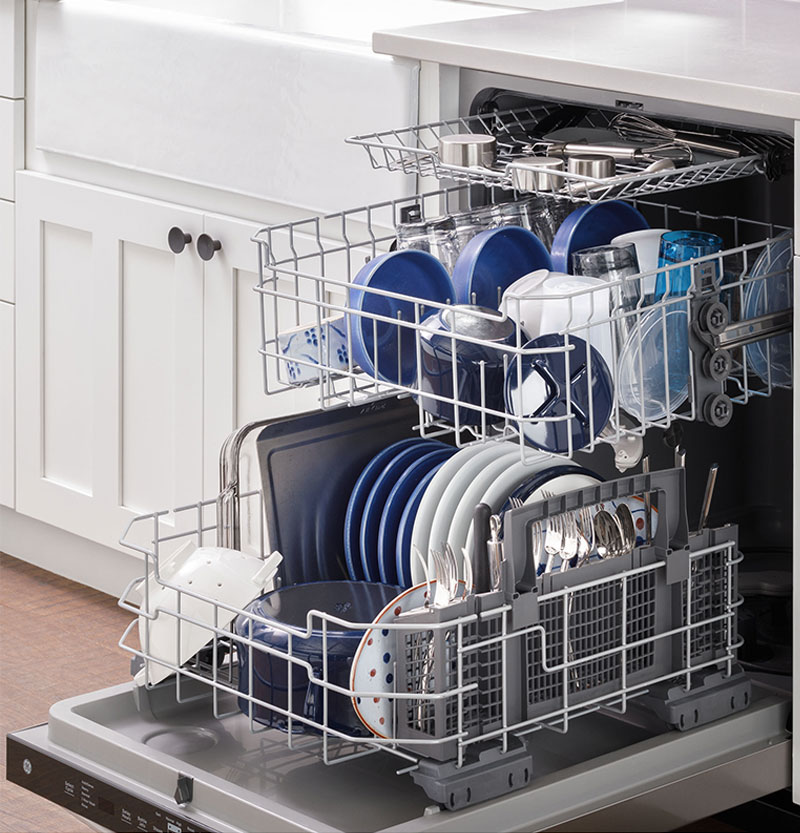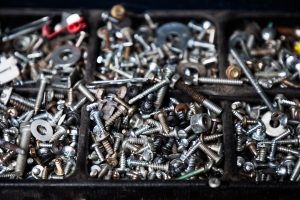Avez-vous déjà ouvert votre lave-vaisselle après un cycle et trouvé votre vaisselle un peu moche? Voici quelques conseils et astuces qui vous permettront d’obtenir de la vaisselle impeccable à chaque fois.
Rincer ou ne pas rincer la vaisselle avant de la mettre au lave vaisselle ?
L’utilisation d’un lave-vaisselle permet de réduire la consommation d’eau de 3 à 4 fois comparativement au lavage de la vaisselle à la main . Mais en rinçant abondamment vos assiettes avant de lancer votre cycle de lavage, non seulement vous ne réduisez pas votre consommation d’eau mais vous en gaspillez. L’eau est une denrée rare et chaque petit geste compte pour la sauvegarder.
Cependant, il sera nécessaire de gratter les grosses particules d’aliments. N’oubliez pas que certains aliments (œufs, lait, rouge à lèvres, taches de thé, tomates, etc.) ont tendance à s’accrocher à la vaisselle, et il vaut mieux les rincer légèrement à l’eau froide. De plus, si vous ne démarrez pas le cycle de lavage immédiatement, il serait bon de prévoir un cycle de rinçage.
Attention ! Il est important de nettoyer régulièrement le filtre afin de ne pas l’obstruer avec les restes de nourriture.
 L’Avis Electrolibre : un lave-vaisselle n’est pas une poubelle… trop de résidus d’aliments peut nuire à son fonctionnement et développer de mauvaises odeurs.
L’Avis Electrolibre : un lave-vaisselle n’est pas une poubelle… trop de résidus d’aliments peut nuire à son fonctionnement et développer de mauvaises odeurs.
Charger correctement son lave-vaisselle
- Laisser de l’espace entre les assiettes, dans le panier à couverts et entre les verres afin que l’eau puisse circuler librement et que tout soit correctement lavé et rincé.
- Placer les couverts entre les tiges pour mieux les fixer. Utiliser les dents pratiques des étagères pour placer les bols, les assiettes et les verres. Cela permettra de séparer la verrerie pour un bon nettoyage.
- Disposer les ustensiles dans le panier prévu à cet effet, avec les pointes des couteaux vers le haut. Certains paniers à ustensiles sont pourvus de couvercles troués qui servent de séparateurs; utilisez-les pour éviter que les fourchettes, couteaux et cuillères ne se collent entre eux. Ainsi, vos ustensiles seront toujours mieux nettoyés.
- Le compartiment du bas est plus exposé à la chaleur, car à proximité de l’élément chauffant, approprié pour les pièces les plus sales et les moins fragiles.
- Ne pas surcharger le lave-vaisselle. L’eau a besoin d’espace pour circuler pour bien laver et bien rincer entre chaque pièce.
- Vérifier que les bras de lavage tournent sans aucune difficulté; au besoin, déplacer la vaisselle.
Utiliser un bon détergent et un agent de rinçage
Un nettoyage de qualité s’obtient avec un bon lave-vaisselle mais aussi avec un bon détergent.
Les tablettes et les pastilles avec leur dilution plus lente que les détergents en poudre, liquides ou en gel, sont généralement plus efficaces. Placez-les dans le distributeur prévu à cet effet et le détergent sera distribué au moment idéal du programme. Il est inutile d’en ajouter au distributeur de prélavage.
Un agent de rinçage est fortement recommandé voire essentiel si vous souhaitez que votre vaisselle soit étincelante et exempte de taches ou de résidus blancs.
 L’Avis Electrolibre : Lisez attentivement les étiquettes des produits pour nettoyer la vaisselle! Certains produits contiennent des phosphates. Par souci d’écologie, ils sont à proscrire. Attention aussi à l’utilisation du vinaigre comme agent de rinçage; son acidité pourrait endommager les joints.
L’Avis Electrolibre : Lisez attentivement les étiquettes des produits pour nettoyer la vaisselle! Certains produits contiennent des phosphates. Par souci d’écologie, ils sont à proscrire. Attention aussi à l’utilisation du vinaigre comme agent de rinçage; son acidité pourrait endommager les joints.
Vérifier la température de votre eau
Réglez votre chauffe-eau à 120-125 degrés Fahrenheit pour obtenir la température idéale de vaisselle propre; une température plus élevée pourrait provoquer un séchage trop rapide. Cela signifie que l’eau s’évapore avant qu’elle ne puisse s’écouler doucement et emporter les derniers morceaux de nourriture avec elle. Si vous continuez à voir une pellicule de saleté collée après un cycle, la solution pourrait être aussi simple que de baisser la température.
 L’Avis Electrolibre : Avant même de mettre votre lave-vaisselle en marche, faites-lui prendre de l’avance en faisant couler de l’eau chaude par le robinet de votre évier. Le premier cycle commencera ainsi immédiatement avec de l’eau chaude au lieu de l’eau froide.
L’Avis Electrolibre : Avant même de mettre votre lave-vaisselle en marche, faites-lui prendre de l’avance en faisant couler de l’eau chaude par le robinet de votre évier. Le premier cycle commencera ainsi immédiatement avec de l’eau chaude au lieu de l’eau froide.







